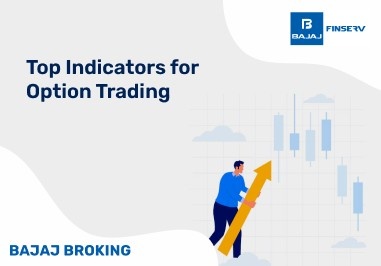BAJAJ BROKING
PDP Shipping & Projects IPO is Open!
Open a Free Demat Account
Trade Now, Pay Later with up to 4x
Track Market Movers Instantly
Share Market Today | Gift Nifty Hints At Consolidation Between 23,800-24,500
Synopsis:
Today’s share market’s key updates include how Hyundai partners with Exide for EV batteries, JK Cement secures Mahan mine, KPI Green drives renewable projects, and FIIs sell ₹4,224.92 cr as DIIs buy ₹3,943.24 cr.
Latest Market News
1. Hyundai Motor India partners with Exide for locally produced EV battery cells.
2. JK Cement emerges as a successful bidder for MahanCoalMine in Madhya Pradesh.
3. AmaraRaja: Hyundai Motor India will equip its domestic product line-up with AMARON’s absorbent glass mat (AGM) battery technology.
4. KPIGreen signs #MoU with RajasthanGovernment for the development of hybrid, solar & wind power projects at Jaisalmer.
5. KPI Green Energy announces January 3 as the record date for the bonus issue.
6. FIIs net sell ₹4,224.92 cr while DIIs net buy ₹3,943.24 cr in equities yesterday.
HYUNDAI MOTOR INDIA LTD
Trade1653.45-9.55 (-0.57 %)
In-Depth Market Insights: Global Outlook, Derivatives & More
US Share Market News
Performance Overview:
The S&P 500 and the Nasdaq Composite closed lower Thursday as traders analysed the latest economic data and corporate earnings.
Sector-Specific Movements:
The S&P 500 and the Nasdaq ticked down 0.1% each to 5,867.1 and 19,372.8, respectively. The Dow Jones Industrial Average was little changed at 42,342.2, breaking a 10-day losing streak. Among sectors, real estate saw the steepest decline, while utilities led the gainers.
Economic Indicators:
In economic news, US third-quarter real gross domestic product rose at a 3.1% annual rate, according to a final estimate by the Bureau of Economic Analysis, up from its previous estimate indicating 2.8% growth. The consensus in a Bloomberg-compiled poll had called for the metric to remain unchanged.
Accenture was the second-best performer on the S&P 500, up 7.1%. The consulting firm increased its full-year revenue growth outlook and logged better-than-expected fiscal first-quarter results.
Other Asset Classes
Treasury Yields:
The US two-year yield fell 3.6 basis points to 4.32% Thursday, while the 10-year rate increased 6.8 basis points to 4.57%.
Currency:
The U.S. Dollar Index (DXY) closed at 108.41, marking an increase of 0.38 points, or 0.35%.
Commodities:
West Texas Intermediate crude oil fell 1% to $69.85 a barrel whereas Brent crude oil futures closed at $72.88 per barrel, reflecting a decline of 51 cents, or 0.7%, from the previous day.
Gold dropped 1.6% to $2,610.80 per troy ounce, while silver slumped 4.1% to $29.49 per ounce
Asian Markets
General Trends:
Asian stocks traded in a tight range early Friday after the Federal Reserve’s hawkish pivot continued to weigh on US equities and bonds but lifted the dollar.
Specific Index Performance:
Shares slid in Australia and South Korea while Hong Kong equity futures dropped. Stocks in Japan edged higher after the yen weakened.
The mixed moves in Asia came after data released Thursday showed resilience in the US economy, weakening the need for imminent rate cuts.
India Market Outlook
GIFT Nifty Projection:
Gift Nifty suggests a soft start for the Indian markets and is likely to consolidate in the broad range of 23,800 -24,500.
Market in Previous Session:
Nifty and Sensex extended their decline as market participants reacted to FOMC outcome coupled with weak global cues.
However, mid and small-cap stocks showed significant recovery from their intraday lows. Except for the pharma sector, all others ended the day in the red.
The steepest declines were observed in Nifty IT, Nifty Auto, and Bank Nifty, each slipping by nearly 2%.
At close, the Sensex was down 964.15 points or 1.20 percent at 79,218.05, and the Nifty was down 247.15 points or 1.02 percent at 23,951.70.
Nifty Short-Term Outlook:
Index has formed a small-bodied candle with a bearish gap above its head (24,200-24,000). Nifty maintained a lower high and lower low pattern. In the process, it has extended decline for the 4th session in a row.
In the coming sessions, a follow-through weakness and a close below (23,850) will open further downside towards 23,600-23,500 levels being the confluence of the 200 day EMA and the lower band of the rising chart.
While holding above 23,850 will lead to consolidation in the broad range of 23850-24500 amid stock-specific action.
Intraday Levels:
Nifty: Intraday resistance is at 24,010 followed by 24,130 levels. Conversely, downside support is located at 23,830, followed by 23,750.
Bank Nifty: Intraday resistance is positioned at 51,850, followed by 52,080, while downside support is found at 51,525, followed by 51,320.
Derivative Market Analysis
Nifty:
The highest call OI is positioned at 25000 followed by the 24500 level, whereas the highest put OI is positioned at the 24000 level.
Strong straddle formation was seen at 24000 level making it a crucial level to watch for. If the index manages to sustain above 24000, it can march towards 24300 levels.
According to option chain analysis, the broader range for Nifty is 23500 and 24500.
The Nifty put-call ratio is now positioned at 0.91.
Bank Nifty:
The highest call OI is positioned at 53500 followed by the 53000 level, whereas the highest put OI is positioned at 50000 followed by the 51000 level.
Put unwinding along with call OI addition was seen at 52000 strike making it a crucial level to watch for. A break above 52000 can trigger further upside.
According to option chain analysis, the immediate range for Bank Nifty is 51500 and 52000.
The Bank Nifty put-call ratio is now positioned at 0.52.
Stay on top of the latest market news with Bajaj Broking’s insights. Our point-to-point expert analysis digs deep into the surface, empowering you with a unique perspective on domestic and global stock market events. Get all the current share market news, including US share market updates in one place and make wise investment decisions.
Do you have a trading account app or demat account app?
You can open an account with Bajaj Broking in minutes.
Download the Bajaj Broking app now from Play Store or App Store.
Disclaimer: Investments in the securities market are subject to market risk, read all related documents carefully before investing.
This content is for educational purposes only. Securities quoted are exemplary and not recommendatory.
For All Disclaimers Click Here: https://bit.ly/3Tcsfuc
Read More Blogs
Our Secure Trading Platforms
Level up your stock market experience: Download the Bajaj Broking App for effortless investing and trading












